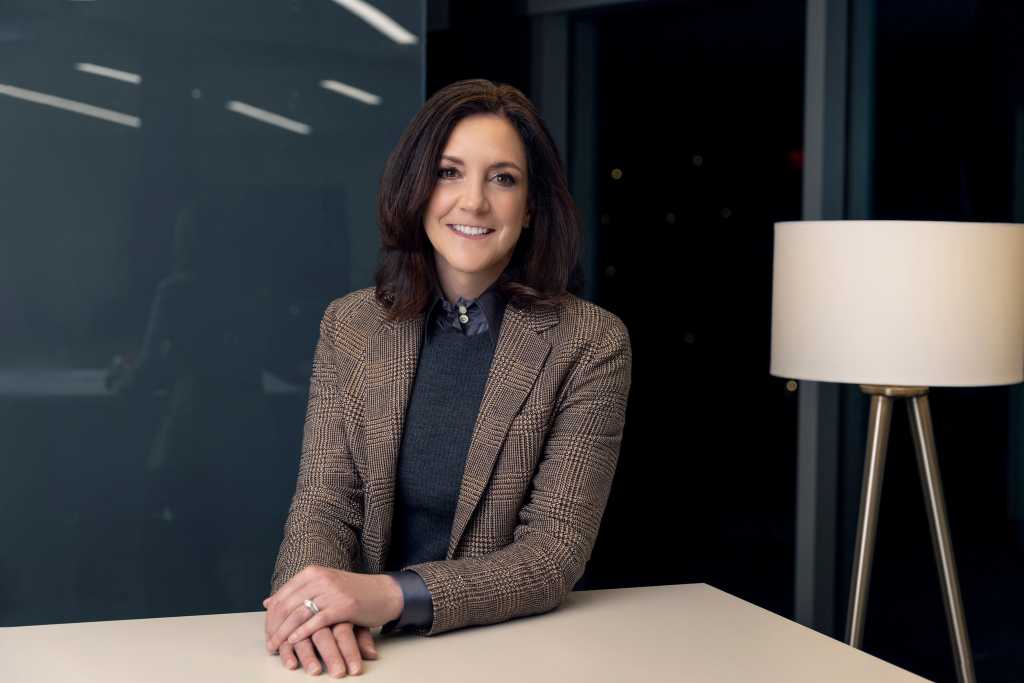By Esther Shein on SEP 12, 2022
Companies are increasingly looking to IT to develop new products and services. Here’s how to transform your IT organization into an innovation engine.
So much has changed since the early days of 2020 when the COVID-19 pandemic forced organizations to rethink where and how people work. What didn’t change was the need for organizations to continue to move forward with digital initiatives. For CIOs and IT leaders, that meant adopting a sink-or-swim mentality, and accelerating initiatives even as they transitioned to remote work.
Fast-forward to 2022. A shift has occurred and IT is now viewed as an equal partner in driving business growth with CIOs recognized as the de facto leaders of innovation. Here, they and others share seven ways to create and nurture a culture of innovation.
Prioritize time for experimentation
A sure-fire formula for driving innovative growth is to “try something new, learn fast, pivot as needed, and scale success,’’ says Mike Crowe, CIO of Colgate-Palmolive. At Colgate, this has led to empowering teams to experiment with a global hackathon called Tech Challenge.

Colgate-Palmolive
Company leadership also creates space and time for employees to innovate by dedicating a team of people to explore emerging technologies, run experiments, and identify business applicability, Crowe says.
“This team has prototyped applications involving multiple components of artificial intelligence, blockchain, low-code/no-code development, and even quantum computing,” the CIO says.
One instance of how that exploration led to real business benefits was with the application of machine learning to predict optimal product formulation using a set of desired consumer benefits. “The team was given time to gather and clean data and experiment with machine learning models,’’ Crowe says. Now the capability is embedded in the product development process.
The greatest barrier to innovation is competing priorities and lack of time to innovate, observes Santhosh Keshavan, executive vice president and CIO of financial and insurance services firm Voya. “Technologies advance at an exponential pace, so there are always more ways to leverage and enhance technology capabilities to better serve our customers,’’ he says. “It is a CIO’s responsibility to influence and prioritize time for strategic and innovative thinking.”
Embrace failure
Innovation is a double-edged sword: It is critical to growth — but that’s also what makes it risky. “It requires bold bets and a willingness to persevere despite setbacks, criticism, and uncertainty,’’ wrote McKinsey senior partners Laura Furstenthal and Erik Roth in a recent blog post. “By providing your employees with psychological safety, an innovation-centric purpose, and encouragement — you can help them find the courage to risk failure in pursuit of creative ambition.”

Voya
People should not be afraid to fail, agrees Jason Moersch, vice president of technology services at Transwestern, a commercial real estate firm based in Houston. “For ideas that don’t take off immediately, learn from mistakes and revisit occasionally. Sometimes the business is not ready for an idea right now but will be at a later time.”
Instilling an innovative culture comes down to creating an environment based on trust, which breaks down barriers and inspires people to have more open mindsets, says Keshavan. “Your team needs to know they can trust you and each other to brainstorm openly, suggest ideas, experiment, and take risks — and even fail, without consequence.
“I prefer to talk about changes in direction or strategies that don’t work,” instead of thinking an experiment or project has failed if it doesn’t work the way you thought it would, says Lorraine Marchand, author of the new book, The Innovation Mindset: Eight Essential Steps To Transform Any Industry. Look at it as an opportunity for learning and changing direction. “Taking a different road is okay,’’ adds Marchand, who is also executive managing director of Merative, formerly IBM Watson Health.
Recognize innovation starts and ends with people

Transwestern
IT is uniquely positioned to see the big picture of what is occurring across the business and identify opportunities for innovation. But this only works if IT leaders get out from behind the “tech things” and have frank conversations with stakeholders across the organization, Moersch says.
“They must understand where people struggle, define the challenges in a manner that makes sense to everyone, and then break them down into small pieces that can be improved through technology solutions,” he says. “This process can go a long way in building trust.”
It’s also important to embrace those in the organization who have explored IT solutions — even if they work outside of IT, he says. “Historically, we would have considered these as ‘shadow IT’ initiatives, but the reality is, IT cannot vet every solution in a vacuum, especially at the pace at which we are expected to adapt.”
People who are willing to explore and engage with IT should be viewed as an asset, not only because they are willing to invest time outside of their traditional job function, but also because they can act as champions who will help push comprehension and adoption throughout the business, Moersch says.

Merative
Voya has promoted a culture that encourages free thinking and creativity, says Keshavan. When you bring people together from diverse backgrounds, experiences, and disciplines to offer unique perspectives, that will naturally foster innovation, he says.
“In 2019, this may have looked like a group of individuals coming together in a meeting room, whiteboarding customer needs, brainstorming ideas, sharing past experiences, and ideating solutions. Picture Post-it notes dotting the walls and flipcharts at every table,’’ he says. “Today, we come together on Microsoft Teams or Zoom and use tools like Miro and OneNote, but the core principles of open collaboration, free expression of ideas, and experimentation remain at the center of Voya’s innovation culture.”
When people are trained to have an innovative mindset, the process of innovation can yield positive results, says Marchand. She likens this to “serendipitous innovations.’’
Emphasize innovation, not technology
New technologies are not innovation — they are just business as usual, says Iliya Rybchin, a partner at global management consulting firm Elixirr Consulting. All companies need to constantly deploy new technologies to maintain competitiveness, he says.
“An upgraded phone system may be a new technology but it’s not innovation. The word ‘innovation’ has been watered down, and as a result, executives struggle to create a culture of innovation because the attempt is often met by skepticism and lots of eye-rolling by employees,’’ Rybchin says.
This has made employees “immune to many innovation initiatives because the word has become a trite, cliche buzzword,’’ he adds.
As a result, fostering a culture of innovation is not tied to the implementation of new technologies or the latest digital solution, he says. Instead, it’s tied to the implementation of tangible business outcomes that drive the company forward. “Employees will rally around a new business model, a new market opportunity, a new product offering,’’ Rybchin says. “They won’t rally around the rollout of a new app.”

Elixirr Consulting
Keshavan says he tries to constantly instill the concept of innovation as basic problem-solving by looking at a customer need and then finding creative ways to fill that need. “Innovative CIOs put people — their knowledge, imagination, and human creativity — at the forefront of problem-solving and create a safe space for them to openly ideate solutions,’’ he says.
Only then should the discussion around technology tools and capabilities come into the picture. “For the most part, innovation is not creating a new technology tool or capabilities, it is most often about bringing existing technologies together in a different way to solve a problem or fill a need,’’ Keshavan says. “CIOs who recognize that people innovate, and technology is simply a means to bring that innovation to life will be most successful.”
CIOs must encourage people within the company to be passionate about problem-solving, which is at the heart of innovation, echoes Marchand. “And they have to encourage people to have unbridled curiosity. This is how they get innovation to flourish.”
Bring customer-centricity into the conversation
Prianka Nandy, chief information and technology officer at Special Olympics International, had no choice but to rethink how to innovate after in-person events were canceled during the pandemic. The organization lost a lot of athletes and volunteers, and it became the perfect time to introduce digital platforms and opportunities to get them back, Nandy says.

Special Olympics International
Customer-centricity needs to be the focus, but Nandy knew IT needed better data to make decisions for the organization to continue to grow.
IT is in the throes of launching a couple of mobile apps. One is for caregivers of athletes so they can learn about their child’s developmental milestones and how their children can get more exercise if that is a challenge, she says. The app also enables families to connect with one another and provide support.
Another app is designed to teach socialization and concepts of inclusion so that the athletes can engage and compete through the app. “We ask them to do something kind to a teacher or show appreciation to a fellow athlete,’’ Nandy says. “Through that, [Olympians] are able to do sports-based activities and compete against other high schools. So it’s very engaging and it’s a great recruitment tool for us to get volunteers, future donors, and future participants.”
You don’t know where innovation lies, Nandy notes. “Most of my leadership was very ready and open for change. It just takes time to have those conversations in a different way than we’ve done before.” This includes discussions about product thinking, agile product delivery, and educating people on cybersecurity.
Promote quick wins
While it’s important to think for the long term and solve for bigger problems, you also need to instill the mindset of a quick win, says Laura Merling, chief transformation and operations officer at Arvest Bank, a community bank based in Bentonville, Ark. This requires striking a balance between the two, she says.

Arvest Bank
“People have to see progress to understand that innovation can happen, so you can’t make innovation so complicated it can’t be executed,’’ Merling says. “It has to be broken down into smaller chunks. That starts to get people familiar with the agile model.”
Prior to her joining Arvest, the bank’s CEO spearheaded a survey to find out how ready employees were for change. Among the information that leadership gleaned was that there were people who said they had skills that were not being fully utilized. That led to the bank starting a reskilling and upskilling program tied to growth.
“Things like that set a path to innovation” and quick wins, Merlin says.
Transwestern’s Moersch is working on the “measure twice, cut once” approach, but says you have to be able to bring a proof of concept to the table in a timely manner. “From there, you can iterate on the ideas,’’ he says. “But if you wait too long, your client will consider you an obstacle rather than an asset and move on.”
Broaden your partner scope
Colgate continues to have strategic partnerships with large enterprise technology companies, but Crowe says that “they are not sufficient on their own. We now equally need to spend time with venture capital firms and innovative startup companies.”
Doing this has led to the development of connected health technologies, such as the company’s smart electric toothbrush, Colgate Hum, which promotes better brushing by tracking the frequency, duration, and coverage with a proprietary Colgate Connect app.
Colgate partnered with a startup company on the connected health platform, worked with a security firm specializing in protecting firmware, and utilized new software and user experience skills to develop the consumer-facing app, Crowe says. “These types of collaborations and cross-functional partnerships are key to driving innovation.”
This requires CIOs to both seek and offer external perspectives and Crowe believes it’s important to spend time with VCs and their portfolio of startups since that’s where tech investments are happening. This lets him study advanced technology and determine its applicability.
“Not only does that bring new capabilities to the organization but it helps shape new ways of thinking — and working — within the IT organization and facilitates a spirit of innovation,’’ he says.

Leave a Reply